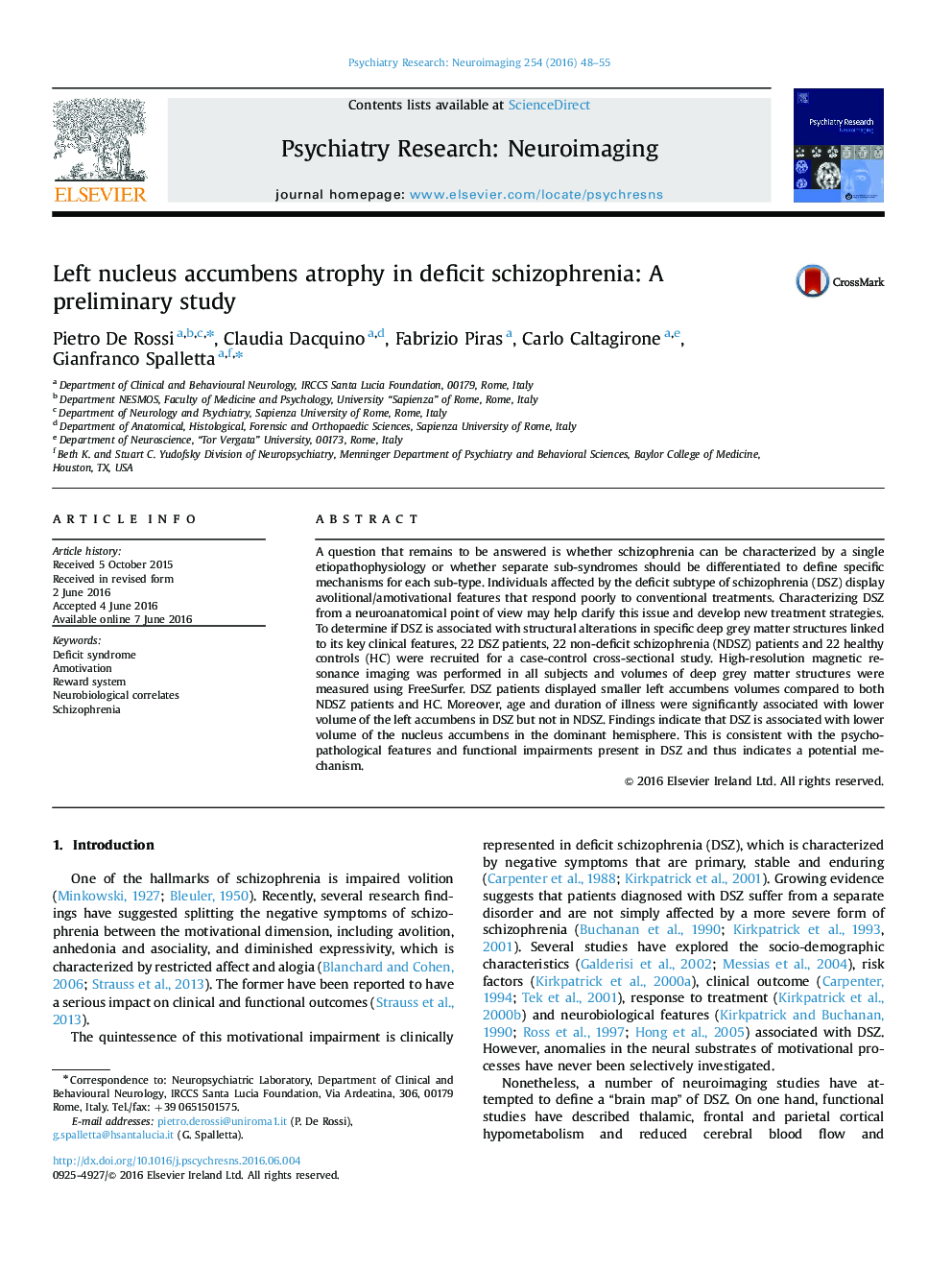| Article ID | Journal | Published Year | Pages | File Type |
|---|---|---|---|---|
| 335235 | Psychiatry Research: Neuroimaging | 2016 | 8 Pages |
•Deficit schizophrenia (DSZ) displays prominent amotivational features.•High-resolution MRI was used to investigate subcortical alterations peculiar to DSZ.•DSZ was associated with smaller left accumbens volumes.•Age and illness duration were associated with left accumbens atrophy in DSZ.
A question that remains to be answered is whether schizophrenia can be characterized by a single etiopathophysiology or whether separate sub-syndromes should be differentiated to define specific mechanisms for each sub-type. Individuals affected by the deficit subtype of schizophrenia (DSZ) display avolitional/amotivational features that respond poorly to conventional treatments. Characterizing DSZ from a neuroanatomical point of view may help clarify this issue and develop new treatment strategies. To determine if DSZ is associated with structural alterations in specific deep grey matter structures linked to its key clinical features, 22 DSZ patients, 22 non-deficit schizophrenia (NDSZ) patients and 22 healthy controls (HC) were recruited for a case-control cross-sectional study. High-resolution magnetic resonance imaging was performed in all subjects and volumes of deep grey matter structures were measured using FreeSurfer. DSZ patients displayed smaller left accumbens volumes compared to both NDSZ patients and HC. Moreover, age and duration of illness were significantly associated with lower volume of the left accumbens in DSZ but not in NDSZ. Findings indicate that DSZ is associated with lower volume of the nucleus accumbens in the dominant hemisphere. This is consistent with the psychopathological features and functional impairments present in DSZ and thus indicates a potential mechanism.
